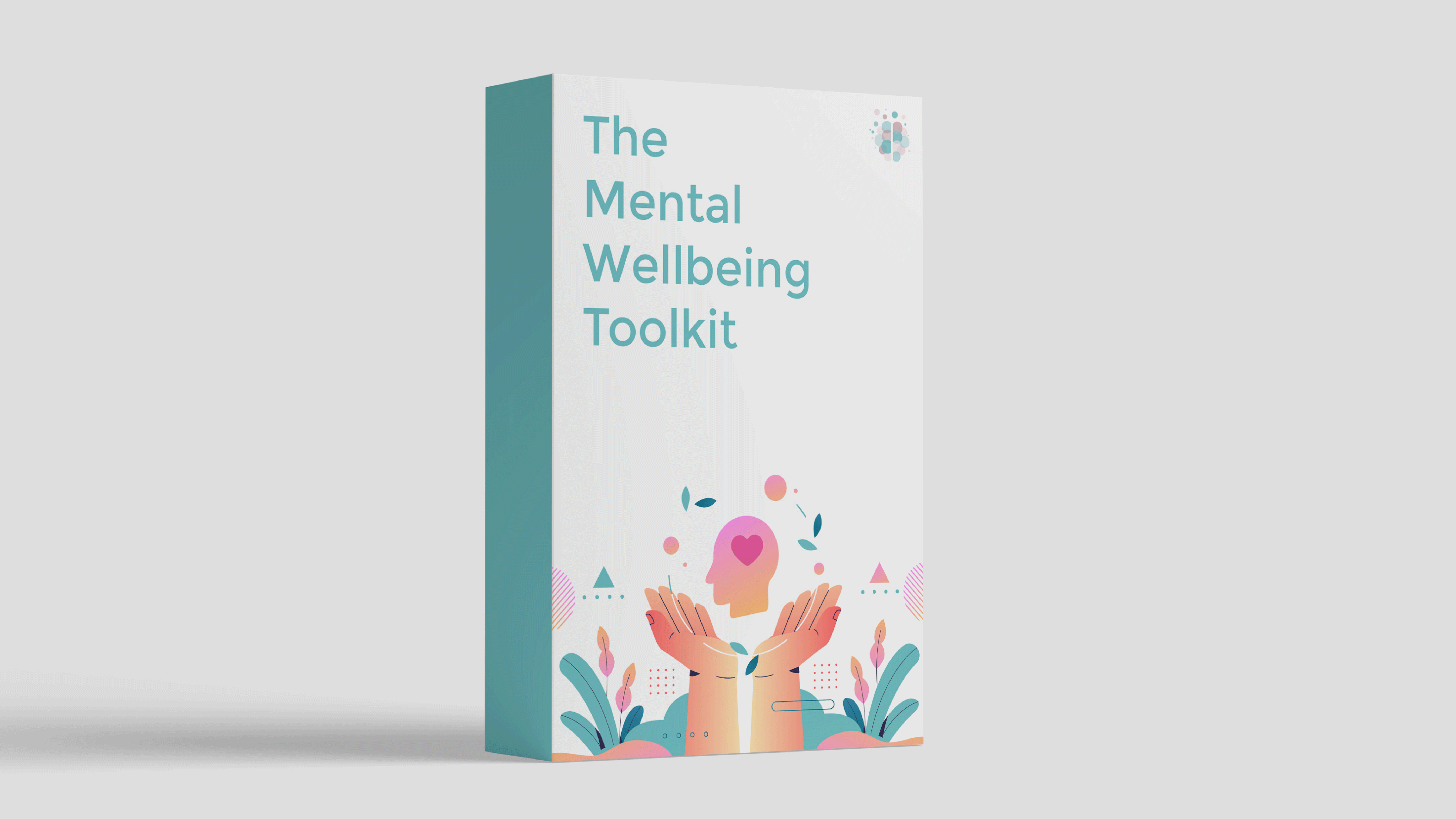Intermittent fasting (IF) is an eating pattern that involves alternating periods of fasting and eating. Unlike other diets like keto and veganism, IF does not focus on what you eat or discourage you from particular food groups. With intermittent fasting, the emphasis is on when you eat.
Multiple studies suggest that IF packs many health benefits and may even help you improve your mental wellbeing and relationship with food.
A popular way of doing IF is 18/6 fasting, which means going without food for 18 hours and restricting all your eating to a 6-hour window every day. For example, eating between the hours of 12pm and 6pm.
How Can Intermittent Fasting Improve Mental Health?
Research on the potential effects of intermittent fasting (IF) on mental health is still relatively limited, and more studies are needed to draw definitive conclusions. However, some preliminary research suggests that IF may have certain benefits for mental wellbeing.
For example, chronic inflammation has been linked to an increased risk of developing depression. Some studies suggest that IF may reduce inflammation markers in the body, which could potentially have a positive impact on mental health.
Furthermore, animal studies have shown that IF is associated with increased production of brain-derived neurotrophic factor (BDNF), a protein that plays a crucial role in mood regulation, learning and memory. Regular exercise has also been shown to increase the levels of BDNF in the brain – this increase is believed to be one of the key mechanisms through which exercise promotes mental wellbeing.
3 Ways Intermittent Fasting Could Improve Your Relationship With Food
1. Mindful Eating
IF can encourage a more mindful approach to eating. By restricting your eating window, you become more aware of your hunger and satiety cues. This can help you develop a better understanding of your body's needs and learn to eat in response to genuine hunger rather than emotional or external triggers.
2. Reduced Snacking and Cravings
IF can help break the habit of constant snacking or relying on food for comfort. By having designated periods of fasting, you create a structure that discourages impulsive eating and mindless snacking. Over time, this can reduce cravings and allow you to have a more balanced and intentional relationship with food.
3. Increased Appreciation for Meals
When you fast for a certain period and then have your meal, you may find yourself appreciating and savoring your food more. This can enhance the pleasure and satisfaction you derive from meals, making them more meaningful experiences.
A Brief History of Intermittent Fasting
Fasting has been a part of human life for thousands of years. Long before the invention of agriculture, prehistoric humans, who were hunter-gatherers, would go through periods of involuntary fasting until they killed their next food.
Fasting, as we know it today, can be traced back to Hippocrates in the 5th century. The ancient Greek physician is known to have prescribed simple fasts as a remedy for fevers and acute diseases.
Modern IF came into the picture circa 1945. Researchers observed that calorie restriction for several hours in mice seemed to extend their lifespan besides making them appear healthier.
Following this discovery, interest in IF spiked as researchers tried to unravel its health benefits and side effects. This diet exploded in the 2000s after its popularization on BBC’s documentary Eat Fast, Live Longer.
5 Common IF Schedules
Going without food for an extended period may seem daunting at first. But there are several ways of approaching intermittent fasting. In fact, this is another advantage of IF over other types of diets. It’s also one of the reasons IF continues to grow in popularity as other weight loss methods fade away.
Here are the five most common IF methods:
- The 12-hour fast is a highly-recommendable IF plan for beginners. You eat normally for 12 hours and then fast for the next 12 hours. An example is eating dinner at 7pm and abstaining from food until 7am the following day.
- The 16/8 diet is the most popular IF method because it’s relatively easy, effective, and sustainable. It gives you 8 hours wherein you plan all your meals, followed by a 16-hour fasting period.
- Eat-stop-eat is a type of time-restricted fasting method where you abstain from eating for 24 hours twice a week. The fasting days should be non-consecutive and spaced out. An example here would be finishing dinner by 7pm on Sunday and fasting until 7pm on Monday when you break the fast. Then, you eat freely on Tuesday and Wednesday, then repeat on Thursday.
- OMAD stands for one meal a day. It’s an extreme form of intermittent fasting, with 23 hours of fasting and one hour of feasting.
- The 5:2 method involves eating your normal meals for five days of the week and then a quarter of your daily calorie requirements (500/600 calories) for the other two days. The calorie restriction days should not be back-to-back.
How to Pick and Stick to an IF Plan
There’s no “best protocol” for doing intermittent fasting. Your ideal fasting schedule depends on various factors, particularly your goals, experience in fasting, and lifestyle.
Start by considering why you want to practice intermittent fasting. Weight loss is the major reason most people do it, but there are many other evidence-based general health benefits of IF, including;
- Improved cardiovascular health
- Lower risk of type 2 diabetes
- Reduced body inflammation
- Improved brain health
- Lower cancer risk
Your reason for IF will determine the intensity of the schedule. For instance, if you’re fasting to lose weight quickly, you’ll be better off with moderate to intense forms of IF like the 16/8 and OMAD.
On the other hand, lower-intensity IF plans like the overnight fast will be ideal for healthy living and reducing the risk of diseases.
Your experience in fasting is another crucial consideration when choosing the right IF plan. Experienced fasters only need to pick an IF plan that perfectly fits their needs and daily lives. However, if you’ve never fasted, it pays to approach IF like a marathon. Prepare, start slowly, and work your way up until you find a method that perfectly matches your needs.
How to Start IF?
The 12-hour fasting method is an excellent place to start for beginners. It’s the easiest form of intermittent fasting, yet it offers all the benefits that come with this method.
The 12-hour fasting is best done at night when you’re sleeping. As you get more experience, you can move on to moderate IF schedules like the 16/8 and 18/6 before attempting more extended regimens.
Potential Side Effects
IF may have some potential negative side effects. These side effects depend on how long you fast and your experience level, and varies from individual to individual. These include:
- Hunger and cravings. Extended periods of fasting can lead to increased hunger and cravings, especially when starting IF. This can make it challenging to adhere to the fasting schedule and may result in overeating during eating windows or choosing unhealthy food options.
- Fatigue and irritability. Some individuals may experience fatigue, irritability, or difficulty concentrating, especially during the initial stages of adapting to IF. These symptoms can be a result of changes in blood sugar levels and hormonal fluctuations.
- Nutrient deficiencies. If not carefully planned, intermittent fasting can potentially lead to inadequate nutrient intake. Restricting eating windows may limit the variety and quantity of essential nutrients obtained from food, especially if a well-balanced diet is not maintained during eating periods.
- Negative relationship with food. While IF can improve one's relationship with food, it can also trigger or exacerbate an unhealthy relationship with food in some individuals. Those with a history of disordered eating or vulnerable mental health should approach IF cautiously and consult with a healthcare professional.
- Impact on certain medical conditions. Intermittent fasting may not be suitable for individuals with certain medical conditions, including diabetes, low blood pressure, or a history of eating disorders. It’s also unsafe for pregnant and lactating women. It’s important to consult with a healthcare professional to assess the appropriateness and safety of IF in specific circumstances.
Summary
Intermittent fasting (IF) is an eating pattern that involves alternating between fasting and eating periods. Unlike popular diets such as keto or veganism, IF does not discourage particular food groups. Instead, the focus of IF is on the timing of meals.
Emerging research indicates that IF holds numerous potential health benefits. While further investigation is needed, IF shows promise in helping people improve their mental wellbeing and relationship with food.
The 12-hour/overnight fast is a great place to start for beginners. This involves eating normally for 12 hours and then fasting for the next 12 hours. For example, you could eat your dinner at 7pm, and then abstain from eating until breakfast at 7am the next day.
Practical Tools to Change Your Habits
Our self-directed program includes expert nutrition advice, a practical roadmap for sustainable behaviour change, meal planning tools, food tracking, and a wide range of additional tools to support your journey towards lasting change. Check out The Mental Wellbeing Toolkit today – it's "like 10 therapy sessions in one."




